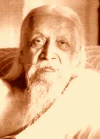| |
| |
|
|
 |
What is
Kapalbhati |
What are Six PurificationPractice
| Importance
| Technique
| Benefits
|
|
What is
Kapalbhati |
What are Six PurificationPractice
| Importance
| Technique
| Benefits
|
|
|
 |
-
Kapalbhati
See
other also |YOGIC SHATKRIYAS
|
Meditation|
Shankhaprakshalana |
Kapalbhati| |
 |
|
What is Kapalbhati |
|
Kapalabhati is an exercise for the purification of the nasal passage and lungs.
Though this is one of the six purificatory exercises (Kriyas), it is practiced
before Pranayama, since it cleanses the respiratory. tract. .
This is especially used to control the movements of the diaphragm and to remove
spasm in bronchial tubes. Consequently, persons suffering from asthma will find
this very helpful. It also aids in curing consumption, removes impurities of the
blood, and tones up the circulatory and respiratory systems.
Kapalabhati is the best exercise to stimulate every tissue of the body. After
and during the practice, a peculiar vibration and joy can be felt, especially in
the spinal centers. When the vital nerve current is stimulated through this
exercise, the entire spine will be like a live wire and one can feel the
movement of the nerve current.

|
|
|
|
Yoga
advocates Dhauti, Basti, Neti, Tratak, Nauli, and Kapal Bhati. Which are special
techniques of purification called Shat Kriyas, since they are six in numbers:
1.
Dhauti(to clean the upper G.I. track)
2.
Basti (
to clean the lower G.I. track)
3.
Neti (
to clean the respiratory track)
4.
Trataka
(eyes)
5.
Nauli (
recti muscles)
6.
Kapal
Bhati (to clean and stimulate the respiratory centres in the skull).

|
|
Importance |
|
The specific organs or
the parts of the body are cleaned by these practices and bring the sense of
purity and freedom to both body and mind.
Great quantities of carbon dioxide & gas are eliminated. Intake of oxygen makes
the blood richer and renews the body tissues. Moreover, the constant movements
of the diaphragm up and down act as a stimulant to the stomach, liver and
pancreas.
Before learning some of the higher breathing exercises such as Bhastrika
Pranayama, it is very important to master over Kapalabhati; Bhastrika breathing
is considered to be the best breathing exercise for awakening the spiritual
power after the purification of the Nadis or nerves.

|
|
Technique |
|
After taking a comfortable sitting position, preferably the lotus pose, take a
few deep breaths. See that the diaphragm is moving properly. During inhalation,
the diaphragm descends and the abdomen is pushed out. During exhalation, the
diaphragm pushes the lungs up and the abdomen goes toward the spine. This
constant up-and-down movement of the diaphragm throws the air in and out. Here
more attention is focused on exhalation than inhalation. Sudden contraction of
the abdominal muscles raises the diaphragm and in turn a volume of air is forced
out of the lungs. This is an inward stroke of the abdomen. As soon as the air is
thrown out, relax the abdominal muscles, which in turn allows the diaphragm to
descend. As the diaphragm comes down, a volume of air automatically rushes in.
Here, inhalation is passive and exhalation is active.
Start one round of this exercise with ten or fifteen expulsions. At the end of
ten expulsions, take a deep inhalation and hold the air as long as possible.
This will add its oxygen value and bring a peculiar, pleasant vibration
throughout the body, as though you are bathing every tissue of the body with
energy. A few days' practice will convince you of its wonderful, stimulating
sensation.
Practice three rounds in the beginning, each round consisting of ten expulsions,
and gradually increase the number of rounds to five or six. After a few weeks'
practice, increase the expulsion to twenty or twenty-five. Between successive
rounds, normal respiration is allowed to give the needed rest. During the
practice, concentrate on the solar plexus and eventually the nervous system will
become spiritually active. This will be manifested by a throbbing sensation in
the spine and lightness throughout the entire body.

|
| |
Benefits |
|
| |
The Kapalabhati activates and invigorates the liver, spleen, pancreas and
abdominal muscles, and improves digestion. It strengthens the abdominal muscle,
diaphragm and heart, deeply massages the internal organs, stimulate digestion
and elimination, removes stale air and toxins from the lungs, and pumps fresh
Prana into the cells of the body. They energize, massage and cleanse the central
nervous system, bringing mental clarity, and alertness. They drain the sinuses,
and stop the nose running. They also create a feeling of exhilaration. When done
through alternating nostrils, there is a balancing effect.
Kapalabhati purifies ida and pingala nadis, removes sensory distractions from
the mind and is used to energize the mind for mental work. It removes sleepiness
and prepares the mind for meditation. It has a similar cleansing effect on the
lungs as bhastrika does. It is good practice for asthmatics, and those suffering
from emphysema, bronchitis and tuberculosis. It balances and strengthens the
nervous system and tones the digestive organs.

|
|
| |
|
|
|